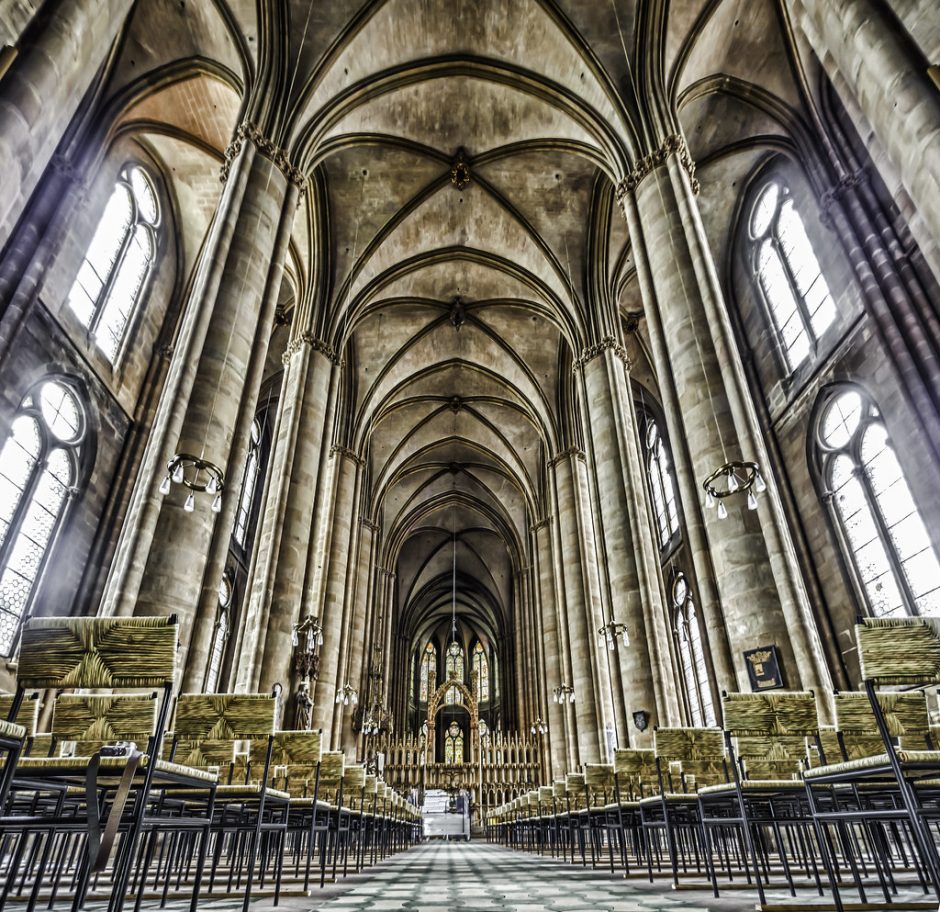
Kim de Wildt
The German title of the 2020 study day organized by the EKD-Institute for church building and contemporary church art (“EKD-Institut für Kirchenbau und kirchliche Kunst der Gegenwart”)[1] at the 15th of February 2020 is not easy to translate because of the double meanings that can be attributed to the actual words used. „Neue Kirchen 2000 – 2020: Kirchenbau und Kirchenbild“ is the German title, and could be translated like this: “New churches 2000 – 2020: Church Building and Church Image”. This does however not really capture the intended meaning, since “Kirchenbau” may refer to an actual church building, but also to the act of building churches. Furthermore, the meaning of church as a community of believers seemed also intended. “Kirchenbild” could be translated with church image, but also with church vision. I presume that these evocative double meanings were intended, since the content of the day addressed all of these aspects. The study day had all of the new churches that have been built in Austria, Switzerland and Germany since 2020 as its focal point. The title of this study day furthermore refers to one of the latest projects of the institute which addresses the fact that besides churches being demolished or reused there still is a substantial amount of new churches that have been built in Germany, Austria and Switzerland in the last two decades. The project website shows a comprehensive database of newly built churches in these German-speaking countries. [2]
One of the two organizers and the director of the institute, Prof. Dr. Thomas Erne, made in his introduction the provocative statement that one should depart from the old to make way for the new in reference to church buildings. A bold statement not all lovers of modern church architecture of the 1950s to 1980s, the group of churches that is most under threat of being demolished, would agree with. A new ”Bild”, so image or vision of church is in need for, according to Erne. Dr. Tobias Braune-Krickau of the University of Göttingen and fellow organizer of the study day introduced the topic with reference to “Kirchenbild” as a metaphor. A small photo exhibition of church images was opened by the photographer, Maximilian Bode, himself, who explained that the common denominator between all of the photos was that they always portrayed something transitory within something permanent (the church building).
Students of the Kirchbau institute presented at three so-called learning stations the “Kirchenbild” of three contemporary Catholic church buildings: St.Theodor in Cologne-Vingst, St. Franziskus in Regensburg-Burgweinting, and Christus, Hoffnung der Welt, Donaucity-Kirche in Vienna. Every participant could attend two of these three workshops and I participated in the first and second one. Both workshops were creative in their setup and required the active involvement of the participants. I first went to the Regensburg station. We were all asked to pair up and look at the actual designs that were part of the architecture competition. Based on some excerpts from the call of bids each duo had to discern which design would be the most appropriate one that would fulfil the needs of the client. In the plenary all duo`s argued why they felt a certain design was the most appropriate one. Based on the background of the participants, reasons of urban planning, liturgical use, or architectural style prevailed. A salient detail is that none of the participants actually chose the winning design! The second workshop I participated in was the case of St. Theodor. Here the students asked the participants to form small groups and design a new church, or alter the existing church so that it would meet the needs of the community as they were formulated in the architectural competition. At the end, the actual design of Paul Böhm was presented.
During the break we attended an organ concert performed by the talented church musician Ka Young Lee in the Lutheran Pfarrkirche nearby.
After the break two lectures on the relation between Kichenbau and Kirchenbild were given. The first lecture, given by Prof. Kerstin Wittmann-Englert, addressed this theme from an art historical and architectural perspective and focused on churches as spaces of remembrance (Assmann) and future expectations. She pointed out that church buildings are more than built liturgy. The second lecture, given by Prof. Christoph Sigrist, analyzed this relation from the focus of church and theological perspectives. He focused on the shift of church visitor from churchgoers, to tourists and spiritual seekers.
The next part of the program consisted of three workshops on the theme of 3 churches, 3 groups, 3 questions. The three workshops all addressed a church building in Cologne (Köln Mauenheim-Weidenpesch, Christuskirche am Stadtgarten, and Immanuel church in Flittard-Stammheim) and in a tandem of pastor and architect the three cases were presented parallel. I attended the workshop on the Christuskirche am Stadtgarten. The architect, Klaus Hollenbeck, explained that they did not anticipate how emotional people would react to the destruction of the former church. His main conclusion was, that in such emotional cases, there are winners and losers. Irrespective of how much is invested in the overall process and communication with all of the stakeholders, people feeling they have lost something valuable cannot always be avoided. Furthermore, he introduced the concept of “cradle to cradle”[3]. Hollenbeck and pastor Christoph Rollbühler made clear that in order to successfully develop such a project, much courage is needed. The role of the architect cannot only be restricted to designing a building, but one needs to be a guider of the process as well. Rollbühler showed insight in the difficult bottom-up process of parish community building.
The last part of the study day was a podium session of the organizers and the pastors and architects of the new churches. One of the conclusions of this very fruitful study day was that Kirchenbau can be a highly emotional theme.
[1] http://kirchbauinstitut.de/ The Kirchbauinstitut is part of the University of Marburg.
[2] http://kirchbauinstitut.de/kirchen-2020-projekt/. Also see: https://www.mdpi.com/2077-1444/10/11/602/htm, pp. 3, 8.
[3] https://www.essentialjournal.co.uk/architectural-thoughts-cradle-cradle/





Follow us: